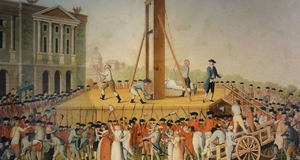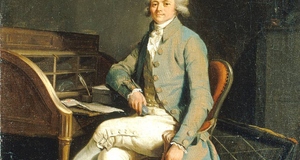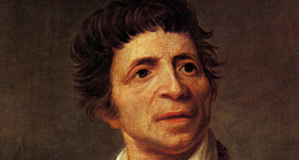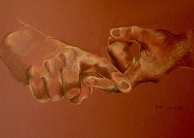Featured Article:The Power of Symbols: The Ideological Representations of a French Revolution Playing Card Deck, the Revolutionnaires
By
2017, Vol. 9 No. 03 | pg. 3/3 | « Conclusion
This special deck of the French Revolution symbolizes an important cultural shift at the historical moment when caste, class, religious, and democratic impulses converged. As such, not only does the Revolutionnaires deck represent an important point during that conjuncture, but it also articulates a significant ideological message into the everyday, mundane lifestyle behaviors of ordinary citizens. In this paper, I have explored the symbolic markings of ideology in the French Revolution deck. Examining playing cards is important work in its own right, because “… playing cards have been a part of western consciousness for a very long time now, so that they draw associations which bear further investigation, leading off in many different directions” (Goggin, 2006). With the Revolutionnaires deck specifically, we can see how a single pack of playing cards wields significant symbolic power during a milestone event, notably the French Revolution.Since all “ideological change is a symbolic conversion,” it should come as no surprise that the Revolutionnaires deck represents an important ideological rupture in France during the last part of the eighteenth century (Aonuma, 2014, p. 384). The revolutionaries, the so-called “republicans” who emerged from scattered philosophical societies around France known as Jacobin clubs, wanted an overhaul of French society, including the removal of the monarchy and a set of constitutionally-based individual rights to protect against the abuse and excesses of the nobility and aristocracy. Their raid on the Bastille – an armory that represented the military might and the political power of the monarchy – demonstrated the revolutionary will that sparked a broad-based political movement. As the Jacobins gained power, they deployed persuasive, albeit symbolic, overtures so that all of French society would be reminded of not only the brutal legacy of oppression from King Louis XVI, but also of the visionary promise of egalitarianism and economic justice from the Revolution. These persuasive maneuvers of the Revolution took many forms, but one extremely significant and ultimately highly symbolic form of which the revolutionary ideology was manifest occurred with a single deck of playing cards. The Revolutionnaires deck, as it has become known, used familiar symbolic expressions – the red liberty or Phrygian cap, the tricolor flag, the flag-waving lady of Liberty – and incorporated them with a new set of court cards that no longer represented the monarchy, but instead embraced the ideals of the Revolution – equality, liberty, fraternity. Yet, these were more than mere symbols. As we know, the “French Revolution was the set of new practices that added a new layer of symbolic meanings to politics,” and the Revolution “placed that symbolic system at the centre of political action” (Furet, 1978, p. 49, 51). The expression of a shared ideology – an ideology premised on individual rights, equality, and justice – was vital for the mobilization, growth, and maintenance of the Revolutionary spirit. In a society where sizable demographic groups were illiterate, uneducated, and disenfranchised, the Jacobins used these important symbols to gain adherence among the populace and ultimately to persuade the French people that a new society was possible and necessary. As I have examined, the Revolutionnaires deck rearticulated the standard Kings, Queens, and Valets into figures who represented Genius (spirit), Equality, and Liberty. With each suit, these new figures signified specific revolutionary ideals, or ideological components to the revolutionary cause that could be expressed in succinct, yet meaningful, markings. For example, one of the cards shows a peasant, with musket in-hand, whose foot is keeping the scroll marked “nobility” crushed against the ground. Another card says “courage” next to a former slave whose shackles have been shed. And, in another case, we see a “Liberty of Culture” (aka Queen) embracing the sacred texts of the world’s three most popular religions while also noting the word “fraternity” next to the woman. In each of these examples, the cards use words, imagery, and other symbols to signify particular ideological beliefs. Of course, after the Revolution, the standard deck of cards reverted back to the classical designs, with court cards representing figures of the monarchy (Hargrave, 1966; Mann, 1966; Taylor, 1973; Tilley, 1973). However, during the revolutionary period, this particular deck of cards emblematically displayed significant cultural and ideological influence. Since France was “experiencing for the first time the conflict between two types of political society” – the traditional, land-owning wealthy class versus the artisans, craft workers, peasants, and idealistic philosophy clubs – that, when combined, revealed a highly disparate country, the ideological shift in political philosophy was marked by important cultural symbols (Furet, 1978, p. 179). We can imagine peasants or even the petit bourgeoisie playing a game with the Revolutionnaires deck. The commonness of playing cards is what makes their use as a vehicle for ideology so interesting and significant. Since playing cards are used for games of entertainment, games of chance, cartomancy, and magic performances, their everyday nature tells us something about popular culture. If there are a variety of different decks available, for instance, we know that the culture values gaming, perhaps even different types of card games. If there is a singular deck, like the Revolutionnaires deck, it does not mean that the culture treats cards as meaningless, but it may, instead, greatly value a particular type of playing card deck. In the case of the French Revolution, and the respective Revolutionnaires deck, we know the historical moment of the French Revolution dictated the ideological significance of many common, everyday items, such as playing cards. According to all available evidence, card gaming and use of playing cards in general were prevalent at the end of the eighteenth century in France (Llewellyn & Thompson, 2015). Thus, the particular Revolutionnaires deck represents not so much the value placed on the pack of cards from the culture, but rather the political and ideological meanings inscribed in them. As Singer remarks, “cards are said to have been instrumental to the progress of civilization,” which underscores how meaningful the Revolutionnaires deck was during the Revolution. Finally, after examining the Revolutionnaires deck, we know that the paste boards used for games and entertainment carried heavy ideological influence. Of course, as Chatto (1848) describes, playing cards can (and should) be considered works of art, but in this case, the pack of playing cards function as much more than individual pieces of art. Virtually every book and article written about playing cards – any playing cards – overlooks the important political and ideological purpose they may serve. In the instance of the Revolutionnaires deck, we cannot ignore the political. Their raison d'être was to promulgate ideological influence. At a time when all things related to the monarchy and the nobility were found in disgust, the new pack of playing cards signified a new political vision – an ideal society that united previously fragmented sectors into a unified whole of constitutionally-protected rights and safeguards for equality. It may be difficult for some to believe, but a single deck of playing cards actually represented the entire philosophical notion of the French Revolution – the disregard for the traditional monarchy, the rejection of a class-based society, the resistance to inequality, the embracement of individual rights, the hope for an economically egalitarian culture, and a belief in a just legal system. Particularly with the court cards, the Revolutionnaires deck outlines the ideological vision of a new French society. As such, these playing cards signify an important historical moment in French and global history. ReferencesAmariglio, Jack & Bruce Norton (1991). Marxist Historians and the Question of Class in the French Revolution. History and Theory, 30(1), 37-55. Aonuma, Satoru (2014) Momotaro as Proletarian: A Study of Revolutionary Symbolism in Japan. Communication and Critical/Cultural Studies, 11(4), 382-400 Andress, David (2016, February). The French Revolution: A Complete History? History Today, 20-28. Aphek, Edna & Yishai Tobin (1989). Semiotics of Fortune Telling. Amsterdam: John Benjamins. Barnard, Malcolm (2001). Approaches to Understanding Visual Culture. Hampshire, UK: Palgrave. Benefield, T. Scott (2009). A (Brief!) History of Playing Cards. Available, http://www.oocities.org/timessquare/arcade/5257/history.htm (accessed 7/1/16). Benham, W. Gurney (1900/1957). Playing Cards: The History and Secrets of the Pack (5th ed.). London: Spring Books. Benjamin, Walter (2002). The Arcades Project (Howard Eiland & Kevin McLaughlin, Trans.). Cambridge, MA: Belknap Press. Breitkopf, Von J. G. L. (1784). Versuch, den Ursprung der Spielkarten, die Einführung des Leinenpapieres, und den Anfang der Holzschneidekunst in Europa zu Erforschen. Leipzig. Brummett, Barry (2011). Rhetoric in Popular Culture (3rd ed.). Thousand Oaks, CA: Sage. Buchan, Alex P. (1812). A Conjecture Concerning the Origin of Playing Cards and the Game of Whist. In Samuel Weller Singer, Researches into the History of Playing Cards with Illustrations of the Origin of Printing and Engraving on Wood (1816, pp. 361-363). London: T. Bensley and Son. Carson, Marian S. (2016). Curiosities for the Ingenious: Selected from the Most Authentic Treasures of Nature, Science and Art, Biography, History, and General Literature. Palala Press. Censer, Jack R. & Lynn Hunt (2001). Liberty, Equality, Fraternity: Exploring the French Revolution. University Park, PA: Pennsylvania State University Press. Chatto, William Andrew (1848). Facts and Speculations on the Origin and History of Playing Cards. London: John Russell Smith. Cichoski, Bill, Angela Rice, Philip Greenan, & Elisa Visick (2010, April 1). Symbols of the French Revolution. FHSS Mentored Research Conference, Brigham Young University. Available, http://scholarsarchive.byu.edu/cgi/viewcontent.cgi?article=1130&context=fhssconference_studentpub (accessed 7/15/16). Dugoure, Jean-Démosthène (1793). Nouvelles Cartes de la Republique Franҫaise (Urbain Jaume & Jaume et Dugoure, Eds.). Paris: Jaume & Dugoure. Elster, Jon (2003). Alchemies of the Mind: Rationality and the Emotions. Cambridge, UK: Cambridge University Press. Figler, Jeff (2015, November). The 52-Card Playing Deck. The Antique Shoppe, 26. Frey, Linda S. and Marsha L. Frey (2004). The French Revolution. Westport, CT: Greenwood. Furet, Franҫois (1978). Interpreting the French Revolution (Elborg Forster, Trans.). Paris: Cambridge University Press. Goggin, Joyce (2006). The Playing Card’s Progress: A Brief History of Cards and Card Games. Reconstruction: Studies in Contemporary Culture, 6(1). Available: http://reconstruction.eserver.org/Issues/061/goggin.shtml. Hargrave, Catherine Perry (1966). A History of Playing Cards and a Bibliography of Cards and Gaming. New York: Dover. Hatcher, Jeannette (2013, July). The Fascinating World of Playing Cards. Haslemere Herald. Available, http://www.haslemeredfas.org.uk/articles/JHatcherHH2.pdf (accessed 7/1/16). Henry, Robert (1800). The History of Great Britain from the First Invasion of It by the Romans under Julius Caesar (3rd ed.). London: A. Straham. Kropotkin, Pëtr (1909). The Great French Revolution 1789-1793 (N. F. Dryhurst, Trans.). New York: Vanguard Printings. Lanning, Katie and Theresa Kelley (2013). A Gallery of Rousseaus. University of Wisconsin Center for the Humanities. Available, http://humanities.wisc.edu/assets/misc/Rousseau_Gallery_Descriptions.pdf (accessed 7/1/16). Lefebvre, Georges (1958). Remarks on Robespierre (Beatrice F. Hyslop, Trans.). French Historical Studies, 1(1), 7-10. Lefebvre, Georges (1967). The Coming of the French Revolution (R. R. Palmer, Trans.). Princeton: Princeton University Press. Linton, Marisa (2006). Robespierre and the Terror. History Today, 56(8). Available, http://www.historytoday.com/marisa-linton/robespierre-and-terror (accessed 7/1/16). Llewellyn, Jennifer & Steve Thompson (2015). The Third Estate. Alpha History. Available, http://alphahistory.com/frenchrevolution/third-estate/ (accessed 7/1/16). Lo, Andrew (2000). The Game of Leaves: An Inquiry into the Origin of Chinese Playing Cards. Bulletin of the School of Oriental and African Studies, 63(3), 389-406. Lotman, Juri (2011). The Place of Art among Other Modelling Systems. Sign Systems Studies, 39(2/4), 249-270. Mann, Sylvia (1966). Collecting Playing Cards. New York: Crown. Mayer, Leo Aryeh (1971). Mamluk Playing Cards. In R. Kurz & O. Kurz (Eds.), Ettinghausen. Leiden, The Netherlands: E.J. Brill. McBride, Theresa (1992). Public Authority and Private Lives: Divorce after the French Revolution. French Historical Studies, 17(3), 747-768. McGuire, Pauly (2016). History of Playing Cards. Club Poker. Available, http://en.clubpoker.net/history-of-playing-cards/p-26 (accessed 7/1/16). McLeod, John (2000, June 8). History of Playing-Cards. The International Playing-Card Society. Available, http://i-p-c-s.org/history.html (accessed 7/15/16). Meursius (1622). De Ludis Graecorum. Lugduni Batavorum. Morley, H. T. (1989). Old and Curious Playing Cards: Their History and Types from many Countries and Periods. Secaucus, NJ: The Wellfleet Press. OLL (2016, April 13). New Playing Cards for the French Republic (1793-1794). Online Library of Liberty: A Collection of Scholarly Works about Individual Liberty and Free Markets. Available: http://oll.libertyfund.org/pages/new-playing-cards-for-the-french-republic-1793-94 (accessed 7/15/16). Phillips, Roderick (1980). Family Breakdown in Eighteenth-Century France: Rouen, 1780-1800. Oxford: Oxford University Press. Place, Robert Michael (2005). The Tarot: History, Symbolism, and Divination. New York: Teacher Perigee. Proulx, Travis & Brenda Major (2013). A Raw Deal: Heightened Liberalism Following Exposure to Anomalous Playing Cards. Journal of Social Issues, 69(3), 455-472. Sadlon, Peter (2007). Francesco Petrarch & Laura de Noves. Available, http://petrarch.petersadlon.com/tarot.html (accessed 7/1/16). Singer, Samuel Weller (1816). Researches into the History of Playing Cards: With Illustrations of the Origin of Printing and Engraving on Wood. London: Bensley and Son. Southey, Robert (1814/1876). Common-Place Book. London: Reeves-Turner. Southworth, Luther (1941, May). Your Deck of Cards. The Linking Ring, 21(3), 257-258. Tarrow, Sidney (2011). “Red of Tooth and Claw”: The French Revolution and the Political Process – Then and Now. French Politics, Culture & Society, 29(1), 93-110. Taylor, Edward S. (Ed.) (1973). The History of Playing Cards with Anecdotes of Their Use in Conjuring, Fortune-Telling and Card-Sharping. Tokyo: Charles E. Tuttle Company. Thibault, Mattia (2015). Semiotics and Cartomancy: Tartu-Moscow Semiotic School Legacy. KOME – An International Journal of Pure Communication Inquiry, 3(2), 1-9. Threadgold, Terry (1986). Semiotics-Ideology-Language. Sydney Studies in Society and Culture, 3, 15-60. Tilley, Roger (1973). Playing Cards. London: Octopus Books. Treadwell, Lawrence (2015). The Real Meaning of the French Revolution. The Cave. Available, http://thecaveonline.com/APEH/meaningfrrev.html (accessed 7/1/16). van Rensselaer, Mrs. John King (1912). Prophetical, Educational, and Playing Cards. London: Hurst and Blackett. Ventsel, Andreas (2014). Hegemonic Signification from Perspective of Visual Rhetoric. Semiotica, 199, 175-192. Vladimirovna, Sabirova Lyudmila (2015). The Socio-Subcultural Phenomenon of a Peculiar Sociolect in Playing Card Nomination. Science Time, 21(9), 253-259. Vološinov, V. N. (1973). Marxism and the Philosophy of Language (Ladislav Matejka & I. R. Titunik, Trans.). Cambridge, MA: Harvard University Press. Webb, Jen (2009). Understanding Representation. London: Sage. Whiting, J. R. S. (1981, July). A Handful of History: Playing Cards in the Seventeenth and Eighteenth Centuries. History Today, 40-43. Willshire, William Hughes (1877). A Descriptive Catalogue of Playing and Other Cards in the British Museum. London: Elibron. Suggested Reading from Inquiries Journal
Inquiries Journal provides undergraduate and graduate students around the world a platform for the wide dissemination of academic work over a range of core disciplines. Representing the work of students from hundreds of institutions around the globe, Inquiries Journal's large database of academic articles is completely free. Learn more | Blog | Submit Latest in Linguistics |
















